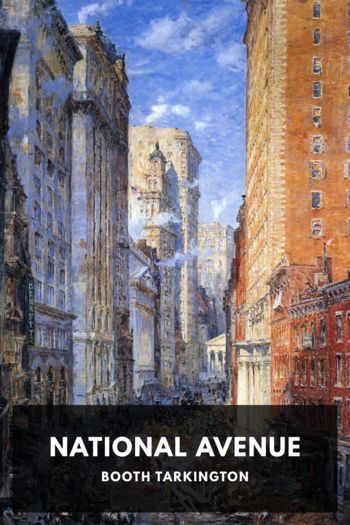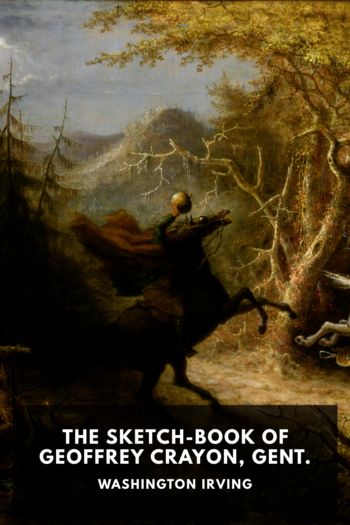Enchanted Evenings:The Broadway Musical from 'Show Boat' to Sondheim and Lloyd Webber by Block, Geoffrey (good story books to read .TXT) 📕

Read free book «Enchanted Evenings:The Broadway Musical from 'Show Boat' to Sondheim and Lloyd Webber by Block, Geoffrey (good story books to read .TXT) 📕» - read online or download for free at americanlibrarybooks.com
Read book online «Enchanted Evenings:The Broadway Musical from 'Show Boat' to Sondheim and Lloyd Webber by Block, Geoffrey (good story books to read .TXT) 📕». Author - Block, Geoffrey
All the musicals in Engel’s list of fifteen turned a profit and nearly all had long runs, including seven of the ten longest runs between Oklahoma! and The Sound of Music. Engel’s most conspicuous omission is without a doubt Show Boat, a musical almost invariably honored by subsequent list-makers and Broadway historians and critics as the first major musical on a uniquely American theme, one of the first to thoroughly integrate music and drama, and the first American musical to firmly enter the Broadway repertory. Although subsequent lists added a few scattered musical comedies from the 1930s and the musicals of Weill, all of which Engel excludes, the spirit of Engel’s list is echoed in nearly all those that followed.23 With virtually no exceptions the musicals on these lists enjoyed long initial runs and critical acclaim and usually received one or more major New York revivals.24
Within a few years after West Side Story, the age of Porter, Lerner and Loewe, Loesser, Bernstein, Blitzstein, Berlin, and Rodgers and Hammerstein was over. These classical Broadway masters of the 1930s, ’40s, and ’50s had generally enjoyed a combination of popularity and critical acclaim analogous to that of their nineteenth-century operatic and instrumental predecessors in Europe. After 1970, irreconcilable differences between this incompatible pair of attributes began to surface, exemplified by the contrasting trajectories of Sondheim and Lloyd Webber, and few musicals by either of these two emblematic artists would readily receive the combination of love and respect enjoyed by the most popular and critically acclaimed musicals of the 1940s and ’50s.
The penultimate chapter of this survey will take a look at the career of Sondheim, the lyricist-composer generally recognized as a central artistic figure on Broadway after 1960. The position taken here is that Sondheim’s modernism and postmodernism can be viewed as an extension and reinterpretation of the Rodgers and Hammerstein model rather than a rebellion from it. It will also be argued that although Sondheim has vigorously denied autobiographical elements in his shows, the pressure to compromise faced by his characters is markedly similar to that faced by Sondheim himself as he creates their songs and faces the demands of commercial theater.
After exploring the issue on an impersonal fictive level, Sondheim, in his first two shows of the 1980s, Merrily We Roll Along and Sunday in the Park with George, directly confronted the issue of artistic compromise in his own work. Such conflicts had been faced more obliquely by several of his spiritual Broadway ancestors surveyed here who experienced similar creative crises in their effort to simultaneously transcend the conventions of their genre and retain their audiences. The Sondheim chapter will acknowledge his attempt to move beyond the integrated action model to the concept (or thematic) musical and his ability to convey the nuances of his increasingly complex characters and musically capture the meaning of his dramatic subjects. It will additionally emphasize how Sondheim’s musicals can be viewed as the proud inheritance of the great traditional musicals from Show Boat to West Side Story.
As revivals continue to demonstrate, many musicals between Show Boat and Gypsy (1927–1959), as well as another group created in the 1960s by several relatively new Broadway artists (perhaps most notably Jerry Bock and Sheldon Harnick’s Fiddler on the Roof [1964] and John Kander and Fred Ebb’s Cabaret [1966]), have not simply disappeared. Although the verdict for these more recent musicals is still inconclusive, it is not too soon to notice the spectacularly long runs and endless tours of Lloyd Webber musicals and the revivals of Sondheim’s earlier shows in the 1970s, ’80s, and ’90s. Even if one hesitates to speak openly of a Broadway canon, few would deny the presence of a core repertory of Broadway musicals for the period of this study and considerably beyond. While the term “core repertory” avoids cultural bias and has the benefit of inclusiveness—in the core repertory there is a place somewhere for both Sondheim and Lloyd Webber (the subject of a new final chapter in this second edition)—the idea of a canon, a nucleus of works within a genre perceived as models of excellence or, more simply, the musicals audiences want to see over and over again, remains a useful if somewhat unpalatable construct. In any event, it is ironic that the deconstruction and even demolition of canons, including the venerable and unassailable eighteenth- and nineteenth-century European classical repertory, has become fashionable just as a firm foundation for canonization has begun to emerge in the genre of Broadway musicals.
While it is still permissible to say that some musicals are more popular than others, most critics and historians are loath to argue that some are actually more worthy of canonical status.25 Northrop Frye, perhaps wisely (or least safely), chastised advocates of both “popular” and “art for art’s sake” camps when he wrote in his Anatomy of Criticism that “the fallacy common to both attitudes is that a rough correlation between the merit of art and the degree of public response to it, though the correlation assumed is direct in one case and inverse in the other.”26
The stance of the present volume is that “popularity” and “art for art’s sake” are not mutually exclusive values, that writing for a commercial market can lead to inspiration as well as compromise. Perhaps we cannot explain or tell why this is so, but we can nonetheless revel in the many enchanted evenings (and some matinees) that these musicals continue to provide.
• ACT I •
BEFORE RODGERS AND HAMMERSTEIN
CHAPTER TWO
SHOW BOAT
In the Beginning
The New Grove Dictionary of Music and Musicians informed its readers in 1980 without exaggeration or understatement that Show





Comments (0)